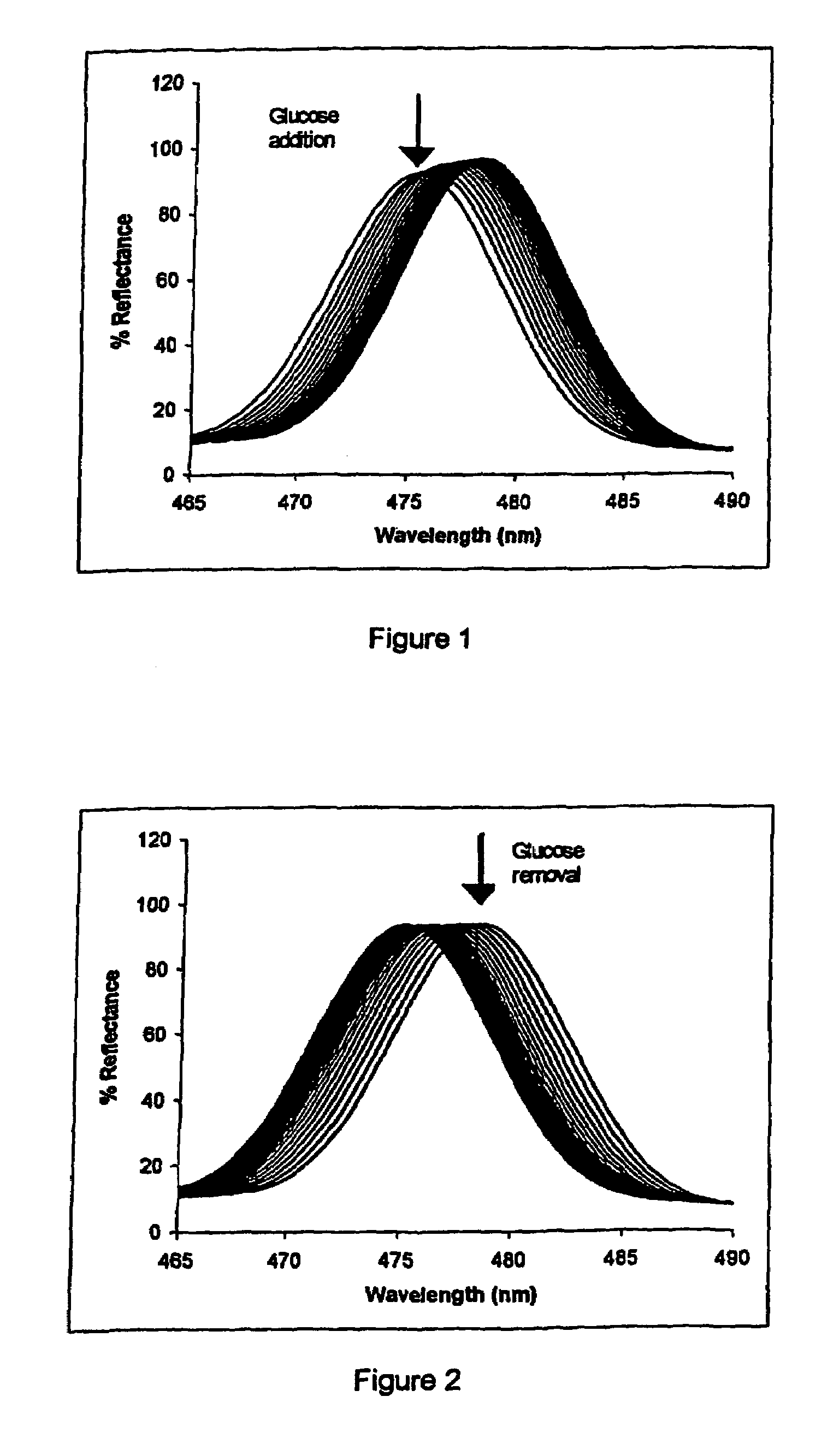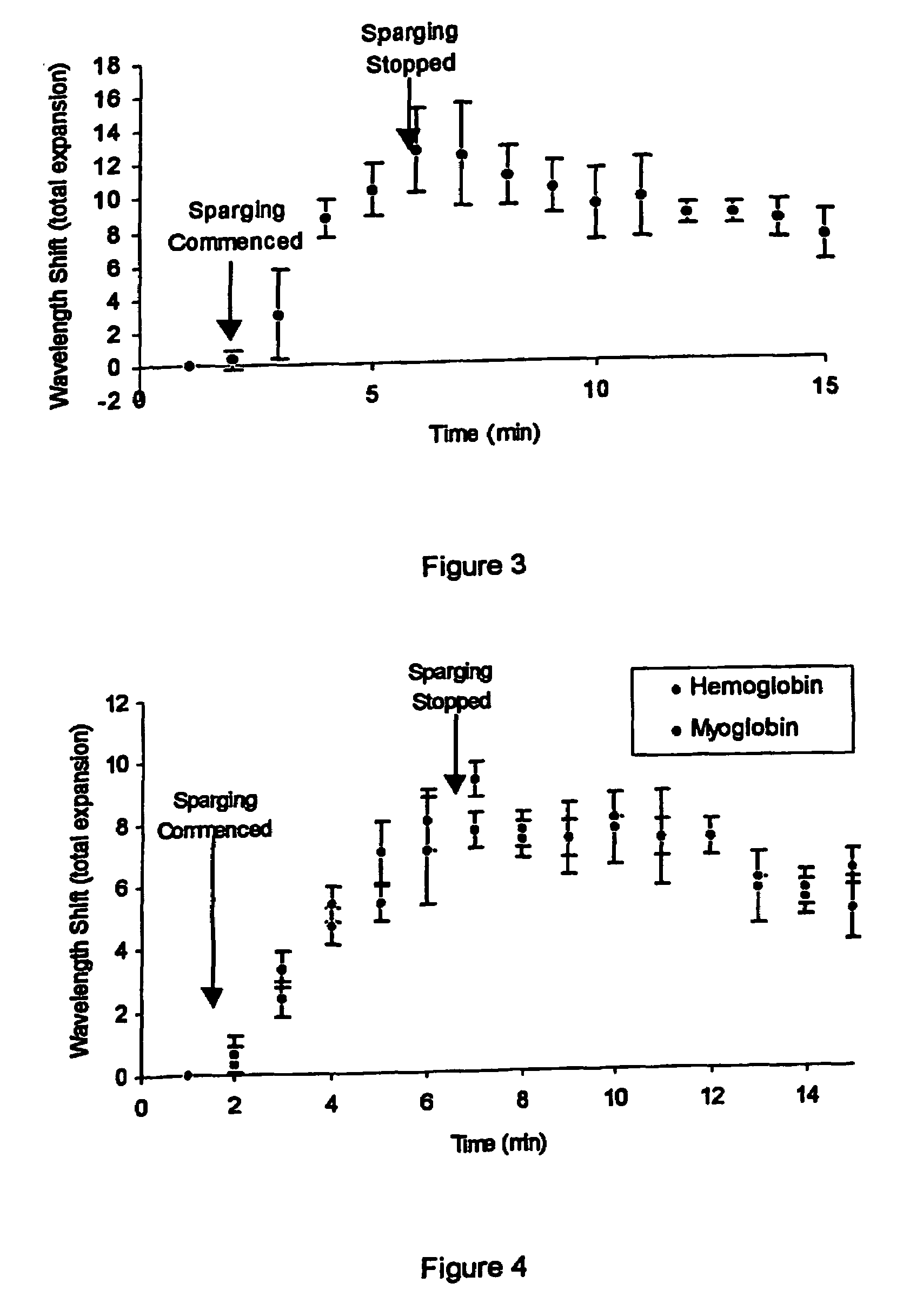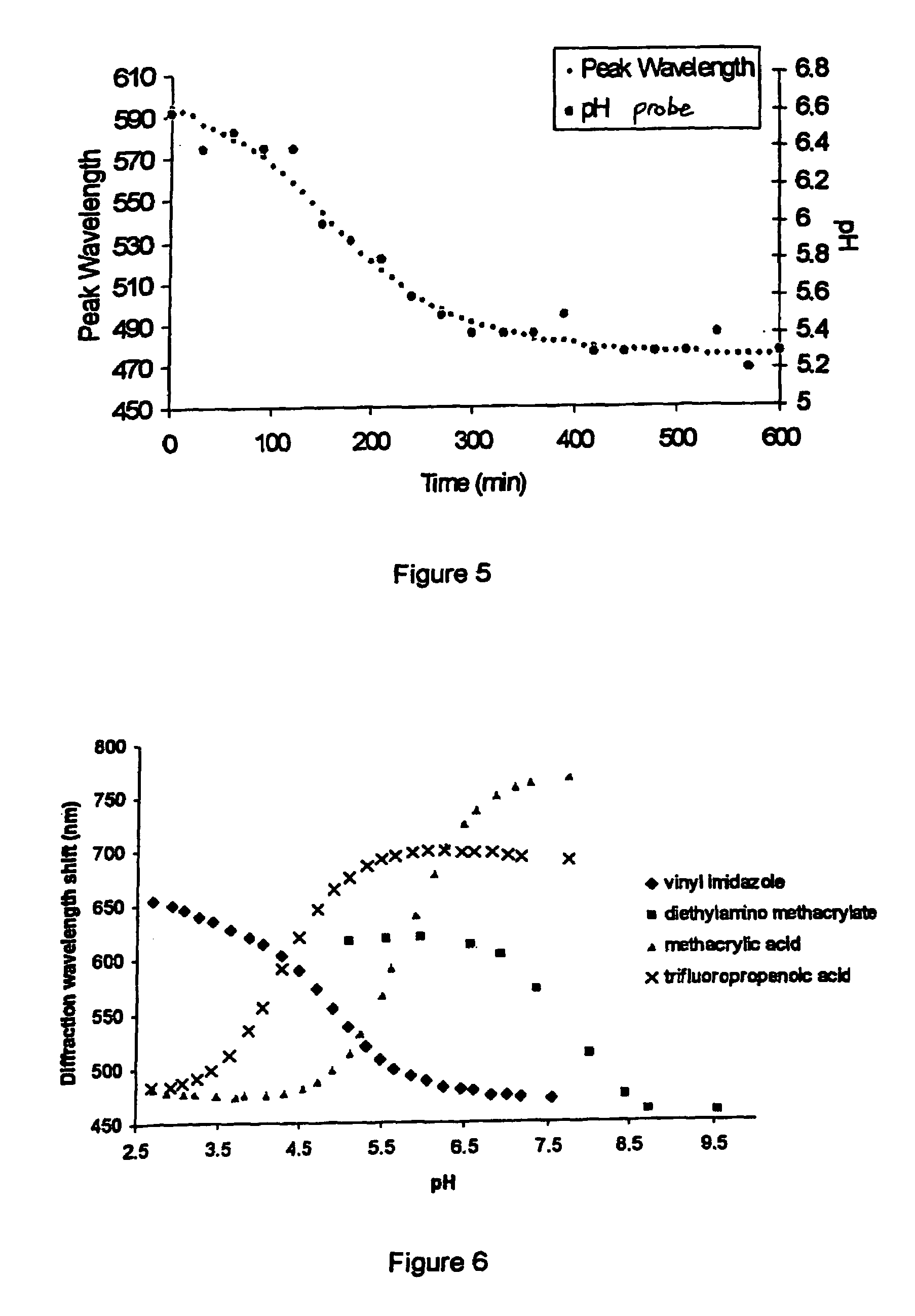Method of detecting an analyte in a fluid
a fluid and analyte technology, applied in the field of detection, can solve the problems of destroying the integrity of the holographic support medium, limiting the industrial application of the sensor, and hysteresis
- Summary
- Abstract
- Description
- Claims
- Application Information
AI Technical Summary
Benefits of technology
Problems solved by technology
Method used
Image
Examples
example 1
Detection of Glucose
[0041]A monomer mixture of 0.36 g acrylamide, 0.42 g methacrylamide, 0.35 g N,N-dimethylacrylamide, 1 ml water, 40 μl 5% DMPA, 0.03 g methylene bis-acrylamide, and 0.1 g vinylphenylboronic acid was adjusted to pH 9 by addition of aqueous NaOH, and subsequently polymerised. Silver was added to the resulting polymer using 0.2M AgNO3 dissolved in 5% acetic acid. The hologram was then recorded in 20% methanol and developed in a standard developer; such developers are detailed in Practical Holography by Graham Saxby, published by Prentice Hall.
[0042]Detection of glucose was made in the presence of a 0.1 M phosphate buffer with 0.1 M NaCl solution at various pH values. The hologram was placed in 1 ml of buffer with a stirrer, and 20 ml of glucose in water (which had been left for 24 hours) was added to the buffer to a glucose concentration of 2 mM.
[0043]Readings were taken at 30 second intervals for a range of pH values. The system was reversible at all pH values (incl...
example 2
Detection of Oxygen Using “Vaska's Complex”
[0045]“Vaska's complex” was immobilised onto a plain HEMA hologram by evaporation from solution in chloroform (2 ml of 5 mg / ml solution). The hologram was then sparged with oxygen in a nitrogen-saturated buffer (50 mmol phosphate buffer, pH 7.0).
[0046]Upon sparging with oxygen, a small, reversible expansion occurred, resulting in an increase in wavelength of about 10 nm relative to controls. This wavelength shift is shown in FIG. 3. After sparging ceased, a proportion of the bound oxygen molecules underwent the reverse reaction and the holographic medium contracted slightly. This was observed as a slight reduction in wavelength.
example 3
Detection of Oxygen Using Oxygen-binding Proteins
[0047]A holographic sensor was produced by immobilising haemoglobin onto a HEMA polymer by drying, followed by the addition of 1.5% acidified glutaraldehyde for 3 minutes. A holographic sensor comprising immobilised myoglobin was similarly produced.
[0048]The holograms were sparged with oxygen for approximately 5 minutes. As can be seen from FIG. 4, a response to changing oxygen concentration was displayed by both haemoglobin and myoglobin containing holograms.
PUM
| Property | Measurement | Unit |
|---|---|---|
| refractive index | aaaaa | aaaaa |
| angle | aaaaa | aaaaa |
| angle | aaaaa | aaaaa |
Abstract
Description
Claims
Application Information
 Login to View More
Login to View More - R&D
- Intellectual Property
- Life Sciences
- Materials
- Tech Scout
- Unparalleled Data Quality
- Higher Quality Content
- 60% Fewer Hallucinations
Browse by: Latest US Patents, China's latest patents, Technical Efficacy Thesaurus, Application Domain, Technology Topic, Popular Technical Reports.
© 2025 PatSnap. All rights reserved.Legal|Privacy policy|Modern Slavery Act Transparency Statement|Sitemap|About US| Contact US: help@patsnap.com



